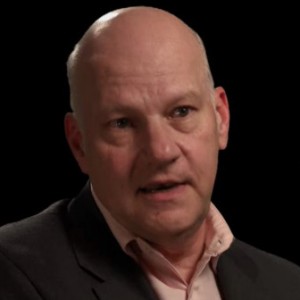At the IFPDA Print Fair in NYC last week, “Conversations with the Curator” was an interview with David Acton, author and Curator of Prints, Drawings and Photography at the Worcester Art Museum, and John Dorfman, editor-in-chief of Art & Antiques Magazine. Throughout the interview, Mr. Acton touched upon the appreciation of the print as a work of art, how things have changed since he first became a curator and how it differs from being a collector.
Preserving art and ideas for future generations has traditionally been a large part of a curator’s job and is mostly how it differs from the goals of a private collector.
Waxing nostalgic, Mr. Acton spoke of curators of yesteryear being sophisticated, experts of the world especially with regard to art, and the sciences involved in making art. It was mostly about being a “connoisseur of objects.” Today this profile has changed in part due to technology, which he said is another aspect of appreciation. Sometimes the internet, for example, can help inform the investigator more quickly than extensive library research, but since the authority of the information on the internet is questionable at times, it’s also easy to dismiss. The same is true of digital images of prints themselves. This means of immediate access to art lacks the tactile appreciation of working with art.
What made printmaking great was the necessity for artists and printmakers to know much more about the art and technology of the day, as well as throughout history, in order to make prints, and appreciate the craft of making prints. Printmaking was a broad specialty, leaking into painting, photography, chemistry, sculpture and many other disciplines. Mr. Acton went on to say the excitement of holding a work of art that has survived through the centuries has largely been dismissed as ancillary information to people new to the field. The joy of connoisseurship, and of holding a work of art, being present and engrossing one’s self in the details of how the ink sits on the print, evaluating the condition of the paper, and the historical context of the work, are being dismissed too quickly by the younger generations. It is no longer being taught. Patience, savoring, being fully present, and experiencing what is being observed is becoming a lost skill.
The disparity he expressed toward Millennials’ lack of patience to “be” with an image before dismissing it was brought up several times. The saturation of images subjected to a generation growing up with the internet should not come as a surprise. How a printed work on paper, which can sometimes take months or years to create, can be dismissed so easily should be understandable, yet is deplorable. While work must speak for itself regardless of process, it is so much harder to appreciate an image solely on the 2-dimensional nature of the composition without being in its presence and feeling the weight, seeing the relief, texture with the knowledge of the technique that went in to creating the image, as well as the composition and color that can be only marginally represented on the computer. It’s no wonder younger people find it easier to reject images so quickly.
This is, in part, inherent in printmaking since it is, and has been, largely about disseminating work broadly. Why should the experience of holding a print be savored if one knows they can pull up an image of it on their cell phone at any time by merely Googling the name or artist? Printmaking solved the challenge of the day about how to share information, and with the internet we are continuing that challenge, yet there is more to appreciating a work of art than merely appreciating its composition.
As far as technology, Mr. Acton made clear that what technique or innovation was used in creating a print should not become a gimick for selling the print. This could be true of both old technologies as well as new. The beauty of a print stands on its own regardless of the technique used to create it. While inkjet was not addressed directly, it seems clear that an inkjet print, that may take time to compose and little time to actually print should not cost more than, say, a 9 plate etching edition of 25 due to the time and skill involved in rendering such an image.
Lastly, David Acton made it clear that for many artists, printmaking is social means of expression and collaboration that gets them out of the studio. To many skilled artist the exchange of ideas and freeing themselves from the technological impediments to making art is an important reason to make prints and provides another facet in the work and lives of many successful artists.





